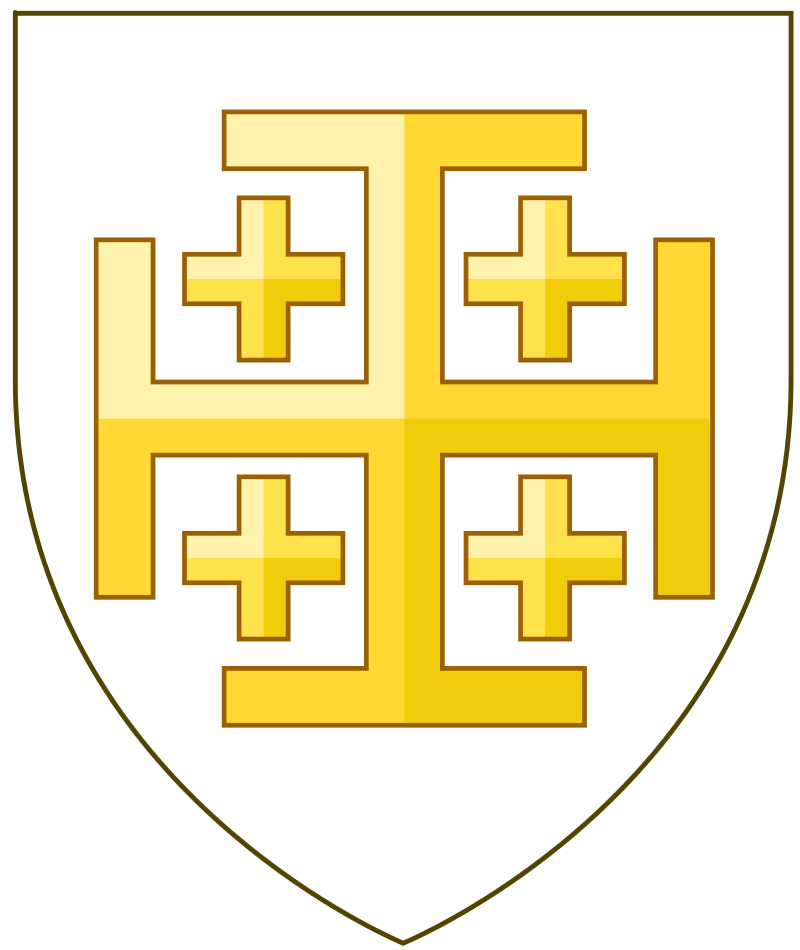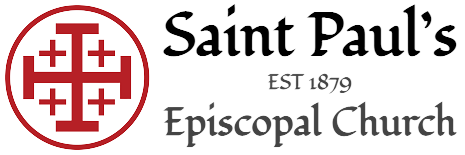History of the Jerusalem Cross

The conventional arms of the Kingdom of Jerusalem

Jerusalem cross on a silver coin of James II of Cyprus (1463-1473)
The Jerusalem Cross, also known as the five-fold cross, the cross-and-crosslets, the Crusaders cross, and sometimes the Cantonese cross, is an elaborate variant of the Christian cross. It’s one of the most well-known Christian symbols.
The Jerusalem cross features one large central cross with equidistant arms and crossbars at each end, with four smaller Greek crosses in each quadrant. Together, the design features five crosses in total.
While it’s believed that the symbol has its roots in the 11th century, its connection to Jerusalem is more recent, dating back to the latter half of the 13th century. Like the Maltese cross, the Jerusalem cross was especially significant during the Crusades of the Middle Ages. It was used as a heraldic cross and as an emblem of Jerusalem, the Holy Land over which the Crusaders were fighting the Moslems.
Godfrey de Boullion, a leader of the Crusades, was one of the earliest to use the Jerusalem Cross as a symbol of Jerusalem, after it was captured and became a crusader state, known as the Latin Kingdom of Jerusalem. In 1291, the Crusader state was overthrown, but for Christians, the cross continued to be a symbol of Jerusalem.
Symbolic Meaning of the Jerusalem Cross
There are several meanings believed to be represented by the Jerusalem Cross.
The Five Wounds of Christ – The Cross of Jerusalem is a reminder of the five wounds suffered by Christ during his crucifixion. The Holy Wounds are a symbol of Christianity and were the main focus during the 12th and 13th centuries when devotion to the Passion of the Christ was on the rise. The large, central cross represents the wound from the Roman soldier’s spear while the four smaller crosses represent the wounds on Jesus’ hands and feet.
Christ and the Evangelists – The design is also considered to be a representation of Christ, represented by the central cross and the four Evangelists (Matthew, Mark, Luke, and John), represented by the four smaller crosses.
Christ and the Earth – Another interpretation posits Christ as the central cross and the four corners of the earth represented by the four crosses. Seen in this light, the design symbolizes the spreading of Christianity to all four corners of the world.
Crusading Nations – The five crosses may symbolize the five nations that played an active role during the Crusades – Great Britain, Spain, France, Germany, and Italy. However, if this is the case, which of these five nations is represented by the central cross?
Jerusalem – In its totality, it’s a symbol of Jerusalem and Jesus Christ, which are the roots of Christianity.
In Georgia – The Cross of Jerusalem holds great significance as a national symbol and is even represented on their national flag. Georgia is a Christian country and has a long relationship with the Holy Land. As such, the cross is a symbol of Georgia’s status as a Christian country.
In the early 20th century, the Jerusalem cross also came to be used as a symbol of world evangelization in Protestantism. A derived design is known as the “Episcopal Church Service Cross” was first used during World War I by the Anglican Episcopal Church in the United States. The Jerusalem cross was chosen as the emblem of the Deutscher Evangelischer Kirchentag (German Evangelical Church Congress) in the 1950s since the 1960s shown in a simplified form where the central Cross potent is replaced by a simple Greek cross.
References:
Jay, N. (2020, August 5). Jerusalem Cross – History and Symbolism. Symbol Sage. https://symbolsage.com/jerusalem-cross-symbol-meaning/
Jerusalem cross. (n.d.). Wikipedia. https://en.wikipedia.org/wiki/Jerusalem_cross
